
Fast, affordable Internet access for all.

From Colorado to Texas, municipal broadband providers continue to rack up industry accolades, not just for delivering fiber service–the gold standard of Internet connectivity–but for these networks’ ability to provide ubiquitous access across an entire community at affordable rates.
The National Association of Telecommunications Officers and Advisors (NATOA) recently announced that its Community Broadband Projects of the Year Awards for 2023 will go to the Connexion network in Fort Collins, Colorado and TeamPharr.net in Pharr, Texas.
Awarding Community-Wide Access and Affordability
The Fort Collins award is in recognition for the city having established “a municipal broadband utility created by and for the community to improve the life of all 80,000 residential and commercial properties of Fort Collins through better, more affordable Internet,” NATOA said in announcing the award.
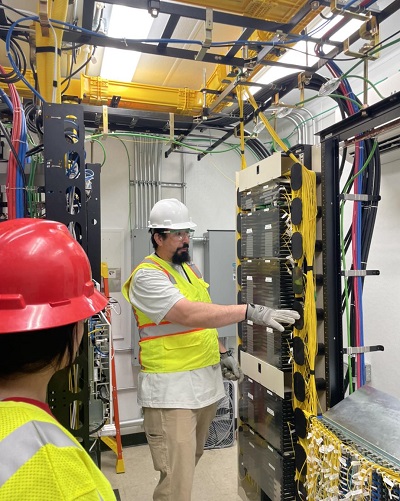
But it wasn’t just because Fort Collins’ network provides city-wide access to fiber. The award also recognizes that “Connexion offers the fastest Internet speeds available at affordable prices (emphasis added) as well as competitive phone and TV services.”

Naming groups of things is one of the few pure joys in life. But despite having a shiver of sharks, a thunder of hippopotami, a discovery of witches, and about a million others, as of yet we've got nothing to describe a group of Internet access and infrastructure who have forgotten more about the business of broadband than the average person is likely to ever see, smell, or hear. From the economics of building fiber networks to the technical challenges of different radio spectrum bands, they separate the signal from the noise every single day.
So how about a scattering of wonks?
This week on the podcast, we bring over the most recent conversation from our Connect This! Show, where for 80 episodes we've hosted broad discussions about broadband policy and infrastructure deployments and live by the mantra that the devil's in the details. Christopher is joined by Travis Carter (USI Fiber), Kim McKinley (UTOPIA Fiber), and Heather Gold (Mears Group) to tackle a host of issues, including why we don't see more cities doing deals with entities like Google Fiber, what we can expect now that Anna Gomez has been confirmed to the FCC, what it means for BEAD grantees if the Affordable Connectivity Program goes away, and more.
Along the way, they hit on what we're seeing in Vermont's Communications Union Districts, a partnership in West Des Moines, Iowa, and whether there's renewed hope for the ACP as it nears the six-month mark from running dry.
This show is 79 minutes long and can be played on this page or via Apple Podcasts or the tool of your choice using this feed.
Transcript below.
We want your feedback and suggestions for the show-please e-mail us or leave a comment below.
Listen to other episodes here or view all episodes in our index. See other podcasts from the Institute for Local Self-Reliance here.
Thanks to Arne Huseby for the music. The song is Warm Duck Shuffle and is licensed under a Creative Commons Attribution (3.0) license.
With Digital Inclusion Week (DIW) less than a month away, ILSR and the National Digital Inclusion Alliance (NDIA) are gearing up for the next Building for Digital Equity (#B4DE) event and encouraging digital equity practitioners to save the date.
The popular virtual gathering will be held Oct. 3 from 12 noon to 1:15 pm ET and will focus on the DIW-inspired theme: “Building Connected Communities: Sustaining Momentum.” The event is free and open for registration here.
Building on the success of our previous events, we are excited to present a fun and informative agenda that will cover:
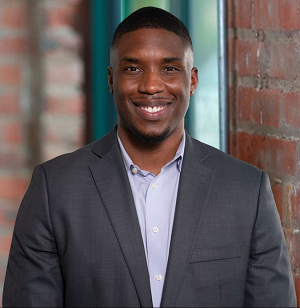
The keynote speaker for the event will be Joshua Edmonds, CEO of Digital C, the Cleveland-based nonprofit technology social enterprise. Edmonds will focus on the link between building appropriately-motivated physical networks and how infrastructure and digital equity work go hand-in-hand.
The key for states to unlock their portion of the $42.5 billion in federal BEAD funds is the submission and approval of their Five Year Action Plans and Final Proposal. The infrastructure law requires states to first file an action plan, and then prepare more detailed Initial Proposals, allowing residents and stakeholders to submit public comments.
So far, 14 states have filed their Five Year Action Plans with the National Telecommunications and Information Administration (NTIA), the Treasury Department agency in charge of allocating the funds to each state and U.S. territory. According to the NTIA’s website, Maine, Louisiana, Delaware, Georgia, Hawaii, Idaho, Kansas, Montana, North Carolina, Ohio, Oregon, Pennsylvania, Utah, and Vermont have all filed their draft Five Year Action Plans.
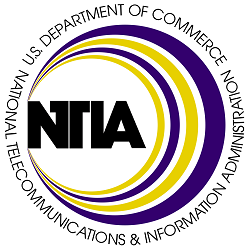
The states that are now in the process of completing their Initial Proposals include: Delaware, Kansas, Louisiana, Montana, Ohio, Tennessee, Vermont, Virginia and Wyoming.
Today, we will look at two states (Maine and Louisiana) and follow up with the others as we are getting a clearer picture of how each state intends to put this historic infusion of federal funds to use.
Maine
It may not generate a lot of headlines in a national press obsessed with AI and billionaire fist fights, but the debate over the final version of the looming farm bill remains important all the same. Especially when it comes to the future of affordable broadband.
The farm bill, generally renewed every five years, provides U.S. policymakers the occasional opportunity to address agricultural and infrastructure issues essential to not only the basic functioning of the country, but the very survival of marginalized Americans.
That includes programs like the Supplemental Nutrition Assistance Program (SNAP, or “food stamps”), which provides affordable food to an estimated 41.9 million Americans–or roughly 12.5 percent of the U.S. population.
The bill has also proven essential to the ongoing maintenance and equitable distribution of modern infrastructure, including affordable broadband access. That includes the funding of essential programs such as the U.S Department of Agriculture’s ReConnect broadband grant program, and the Community Connect Grants program.
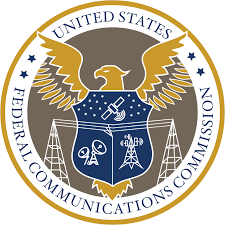
The farm bill may also soon play a key role in maintaining another key government program: the $14 billion Affordable Connectivity Program (ACP) currently overseen by the Federal Communications Commission (FCC).
Both Band Aid And Key Lifeline

This week on the podcast, Christopher speaks with Brieana Reed-Harmel, Municipal Fiber Manager for the City of Loveland, located in Colorado’s Northern Front Range about an hour north of Denver. The city is home to over 80,000 residents as well as a municipal fiber broadband network called Pulse.
Chris and Brieana discuss Loveland’s population expansion over the past few years and Pulse’s resulting plans to extend beyond city limits into the “urban fringe,” which is more difficult to receive grant funding to serve. Brieana shares the ways in which the municipal network has leveraged its relationships, having partnered with its local school district to connect unserved areas during the pandemic, and currently in conversation with the county, which will help Loveland with the matching funds it needs for upcoming grant expansions. Brieana speaks to the challenges of building out the network through inflation and the pandemic. She stresses the importance of having a solid business model and great project management, as well as the scrappiness and ongoing investment needed to ensure a municipal network is sustainable and can bring residents quality connectivity at the best value.
This show is 25 minutes long and can be played on this page or via Apple Podcasts or the tool of your choice using this feed.
Transcript below.
We want your feedback and suggestions for the show-please e-mail us or leave a comment below.
Listen to other episodes here or view all episodes in our index. See other podcasts from the Institute for Local Self-Reliance here.
Thanks to Arne Huseby for the music. The song is Warm Duck Shuffle and is licensed under a Creative Commons Attribution (3.0) license.
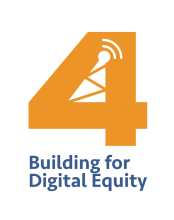
Dave Sevick, Executive Director at Computer Reach in Pittsburgh, has taken his experience helping people with devices and supercharged it for digital equity work. Computer Reach refurbishes computers and sends digital navigators into the home in both urban and rural areas, which is an interesting challenge that many have not attempted. We talk about how they are funded and why they often use Linux-powered devices, among many other topics.
This show is 18 minutes long and can be played on this page or using the podcast app of your choice with this feed.
Transcript below.
We want your feedback and suggestions for the show-please e-mail us or leave a comment below.
Listen to other episodes here or see other podcasts from the Institute for Local Self-Reliance here.
Thanks to Joseph McDade for the music. The song is On the Verge and is used per his Free-Use terms.
The city of Dublin, Ohio has struck a public private partnership with altafiber (formerly known as Cincinnati Bell) to build a new citywide fiber network city leaders hope will finally deliver the kind of affordable, next-generation broadband access Dublin’s 50,000 residents have long been clamoring for.
In 2022 the city issued a request for proposal (RFP) looking for a partner on a citywide network build. At a June 26 meeting, the Dublin city council voted unanimously to select altafiber from a roster of seven potential applicants.
According to the arrangement, construction of the city network is expected to begin in Spring of 2024, with every premise in Dublin passed by a 10 gigabit per second (Gbps) capable network within three years. A select number of undetermined customers are expected to be brought online sometime in the latter part of next year, officials tell ILSR.
A city press release notes that altafiber will invest $35 million in the fiber network, as well as potentially providing the infrastructure necessary to help the city support either public Wi-Fi initiatives or a City Innovation Center. The city says it will pay about $6 million to bury the necessary fiber infrastructure citywide.
As digital equity advocates push Congress to replenish the rapidly diminishing funds that support the Affordable Connectivity Program (ACP), a recently published report should help bolster the case that the program – which subsidizes the cost of monthly Internet service for income-eligible households – won’t just help more Americans get broadband access, it can also incent Internet service providers (ISPs) to make infrastructure investments in unserved and underserved areas.
The report, titled "Closing the Digital Divide Benefits Everyone, Not Just the Disconnected" – published by Common Sense and the Boston Consulting Group (BCG) – emphasizes the benefits of universal Internet access across education, health care, government services, and employment. It makes the case that universal connectivity would allow institutions to “integrate Internet-based technologies into their services, improving them for the benefit of all.”
Most notably, the report advocates for increased ACP enrollment, arguing that in addition to providing low-income households some short-term relief from pricey Internet bills, the program can provide an economic incentive for ISPs to invest in unserved and underserved communities by increasing the return on investment (ROI) in areas that have previously been considered unprofitable.
During the COVID-19 lockdown in 2020, organizations that had not previously focused on digital inclusion work scrambled to help their communities stay connected as school, healthcare, and other services transitioned online.
OCA-Asian Pacific American Advocates (OCA) was one of these organizations, and in advocating for the digital access needs of Asian Americans, Native Hawaiians, and Pacific Islanders (AANHPIs), found that there was not much data documenting connectivity gaps within these communities. The "model minority" myth, which characterizes AANHPIs as one monolithic group, enjoying “uniform high achievement and high income, [and] relatively untouched by racial and ethnic discrimination,” obscures the digital access gaps in many AANHPI communities and has likely contributed to the dearth of research investigating AANHPI connectivity needs.
OCA Broadband Access and Digital Equity Fellow Yen Jeong told ILSR how difficult it has been to challenge the model minority myth: “Every time we say that our communities need more [digital access] support, everyone says that Asian Americans are digitally already very fluent,” Jeong said, adding that the assumption that many AANHPIs have tech jobs makes it especially difficult for OCA to galvanize support for the AANHPI-focused digital inclusion work.
"It’s been really tough to challenge the narrative."
The assumption that all AANHPIs are connected to the Internet, along with the lack of evidence to break down this assumption, impeded OCA’s efforts to rally support for AANHPIs’ digital access needs, made urgent by the pandemic. Motivated to get all AANHPIs online, OCA launched a major data collection campaign to challenge the model minority narrative and build the foundation for its newest area of advocacy – technology, workforce, and digital inclusion.
OCA’s Entry to Digital Inclusion